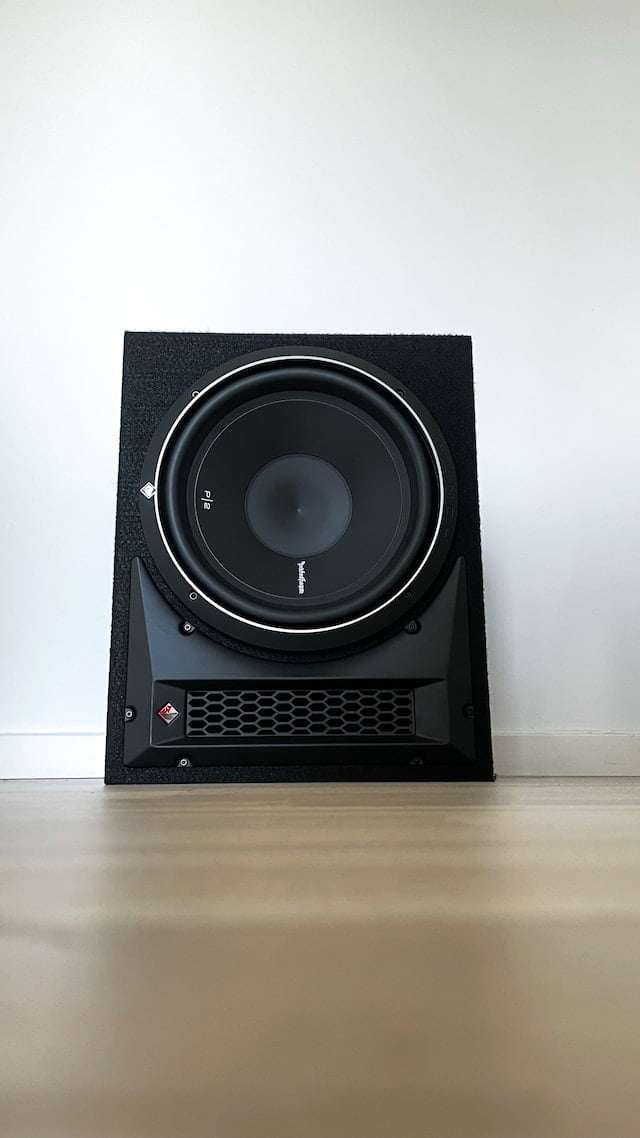Subwoofers are an essential component of any home theater or audio system. They are responsible for delivering the deep bass frequencies that add depth and richness to music and movie soundtracks. However, like any electronic device, subwoofers have a limited lifespan. In this article, we will explore how long subwoofers typically last, and what factors can affect their lifespan.
What is a subwoofer?
A subwoofer is a type of loudspeaker designed to produce low-frequency sounds, also known as bass. The name “subwoofer” is derived from the fact that these speakers are often placed below or “sub” the main speakers in a home theater or audio system.
Subwoofers come in different sizes and designs, but the most common types are passive and active subwoofers. Passive subwoofers do not have built-in amplifiers and require an external amplifier to power them. Active subwoofers, on the other hand, have a built-in amplifier and can be connected directly to an audio source or receiver.
How long do subwoofers last?
The lifespan of a subwoofer depends on several factors, including the quality of the subwoofer, how often it is used, and how well it is maintained.
Generally, a well-built subwoofer can last anywhere from five to ten years, or even longer, with proper care and maintenance. However, some subwoofers may fail prematurely due to manufacturing defects or poor-quality components.
One of the primary factors that can affect the lifespan of a subwoofer is the amount of power it receives. Subwoofers are designed to handle a specific range of power, and exceeding that range can cause damage to the subwoofer’s voice coil or other components.
It’s important to match the subwoofer’s power requirements to the amplifier or receiver’s output to avoid overpowering the subwoofer.
Another factor that can impact the lifespan of a subwoofer is how often it is used. If the subwoofer is used frequently, it may wear out faster than one that is used less often.
Similarly, if the subwoofer is used at high volume levels for extended periods, it may experience more wear and tear than one that is used at lower volumes.
Lastly, proper maintenance can also play a significant role in the longevity of a subwoofer. Regular cleaning and dusting can help prevent the accumulation of dirt and debris that can clog the subwoofer’s ports and vents.
Additionally, inspecting the subwoofer for damage or signs of wear can help identify potential issues before they become more severe.
What are some signs that a subwoofer needs to be replaced?
While subwoofers can last for several years with proper care and maintenance, they will eventually wear out and need to be replaced.
Here are some signs that it may be time to replace your subwoofer:
- Distorted or crackling sound: If your subwoofer is producing distorted or crackling sounds, it may be a sign that the speaker cone or voice coil is damaged.
- No sound: If your subwoofer is not producing any sound, it may be due to a blown fuse, a damaged voice coil, or a faulty amplifier.
- Rattling or buzzing sound: If your subwoofer is producing a rattling or buzzing sound, it may be a sign that the subwoofer’s cone is damaged or loose.
- Overheating: If your subwoofer is overheating, it may be due to a malfunctioning amplifier or inadequate ventilation. Overheating can cause damage to the subwoofer’s components and shorten its lifespan.
- Physical damage: If your subwoofer has been dropped or physically damaged, it may be damaged internally as well, even if it still appears to be functioning normally. Physical damage can affect the subwoofer’s performance and lead to further problems down the line.
If you notice any of these signs, it’s essential to have your subwoofer inspected by a professional to determine if it can be repaired or if it needs to be replaced.
Factors that can affect the lifespan of a subwoofer
While the average lifespan of a subwoofer can be anywhere from five to ten years, several factors can affect its longevity.
Here are some of the most common factors that can impact the lifespan of a subwoofer:
- Quality of the subwoofer: The quality of the subwoofer can play a significant role in its lifespan. High-quality subwoofers with well-built components and sturdy enclosures are more likely to last longer than cheaper models with inferior materials.
- Amount of power: As mentioned earlier, the amount of power that a subwoofer receives can impact its lifespan. Overpowering a subwoofer can cause damage to the voice coil or other components, leading to premature failure.
- Frequency of use: The frequency of use can also affect the lifespan of a subwoofer. Subwoofers that are used frequently or at high volume levels are more likely to wear out faster than those that are used less often.
- Maintenance: Proper maintenance can help extend the lifespan of a subwoofer. Regular cleaning and inspection can prevent the buildup of dirt and debris and identify potential issues before they become more severe.
- Environmental factors: Environmental factors such as humidity, temperature, and exposure to sunlight can also affect the lifespan of a subwoofer. Subwoofers that are exposed to extreme temperatures or moisture may be more prone to damage or failure.
How to extend the lifespan of a subwoofer?
While subwoofers have a limited lifespan, there are several steps you can take to extend their longevity. Here are some tips for maintaining your subwoofer:
- Use the correct amount of power: Make sure to match your subwoofer’s power requirements to your amplifier or receiver’s output to avoid overpowering the subwoofer.
- Use the subwoofer properly: Avoid using your subwoofer at excessively high volume levels or for extended periods to minimize wear and tear.
- Properly maintain the subwoofer: Regularly clean and dust your subwoofer to prevent the buildup of dirt and debris, and inspect it for signs of damage or wear.
- Use quality components: Use high-quality cables and connectors to ensure that your subwoofer is receiving clean, stable power.
- Protect the subwoofer from environmental factors: Keep your subwoofer away from extreme temperatures, moisture, and direct sunlight to prevent damage.
Frequently Asked Questions (FAQ’s)
Q. How long do subwoofers typically last?
Ans: Subwoofers can last anywhere from five to ten years or longer with proper care and maintenance.
Q. What factors can impact the lifespan of a subwoofer?
Ans: Several factors can affect the lifespan of a subwoofer, including the quality of the subwoofer, the amount of power it receives, the frequency of use, maintenance, and environmental factors.
Q. Can a subwoofer be repaired if it fails?
Ans: In some cases, a failed subwoofer can be repaired by a professional. However, if the damage is severe, it may need to be replaced.
Q. How can I extend the lifespan of my subwoofer?
Ans: To extend the lifespan of your subwoofer, use the correct amount of power, avoid using it at excessively high volume levels or for extended periods, properly maintain the subwoofer, use quality components, and protect it from environmental factors.
Q. What are some signs that my subwoofer may be failing?
Ans: Signs that your subwoofer may be failing include distortion or crackling sounds, a lack of bass output, a humming or buzzing noise, and physical damage to the subwoofer.
Conclusion
In conclusion, subwoofers are an essential component of any audio system, but they have a limited lifespan. While subwoofers can last anywhere from five to ten years or longer with proper care and maintenance, several factors can impact their longevity. By understanding the factors that can affect a subwoofer’s lifespan and taking steps to properly maintain and use it, you can extend its lifespan and enjoy high-quality bass for years to come.
You might also like,

